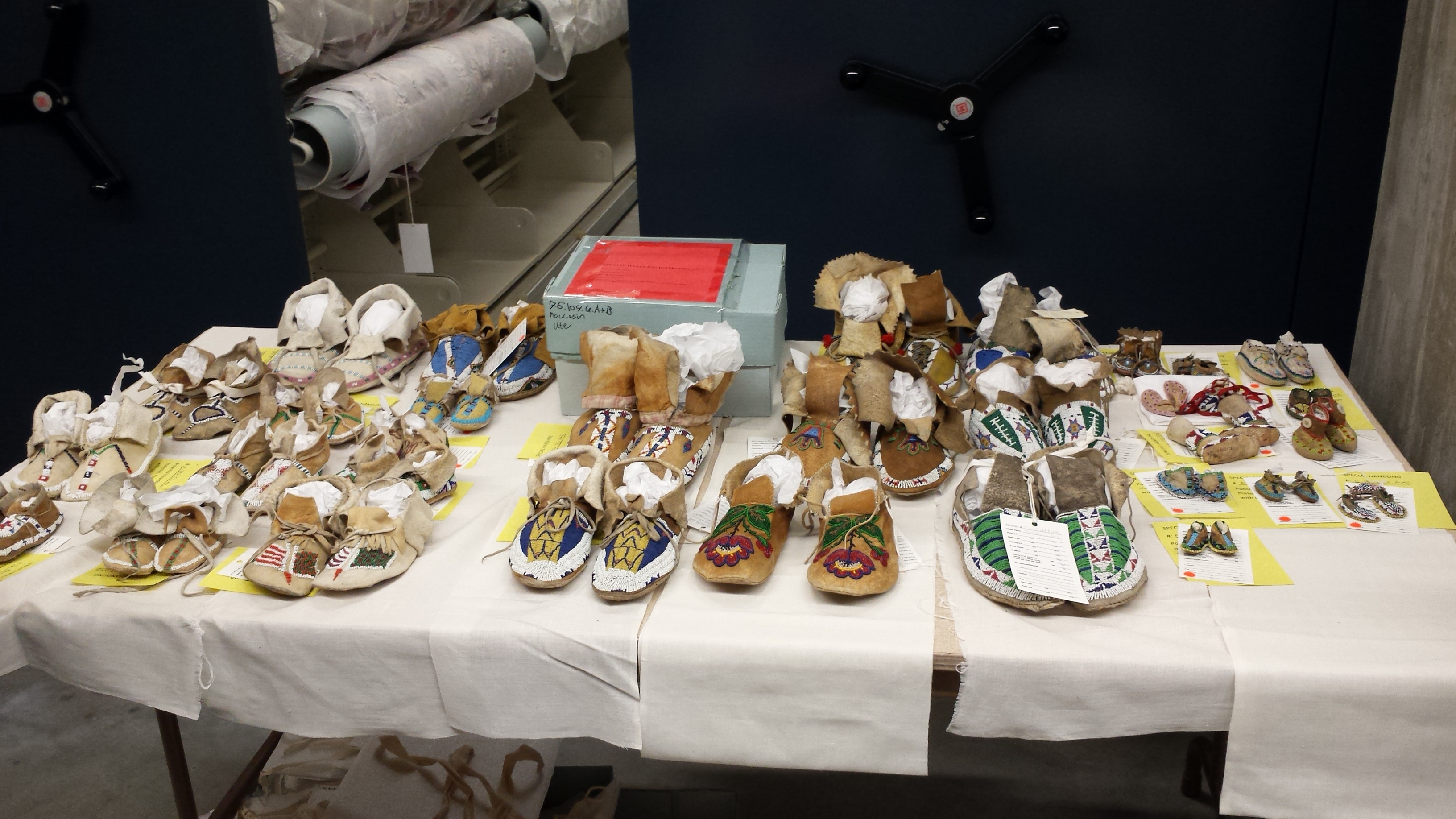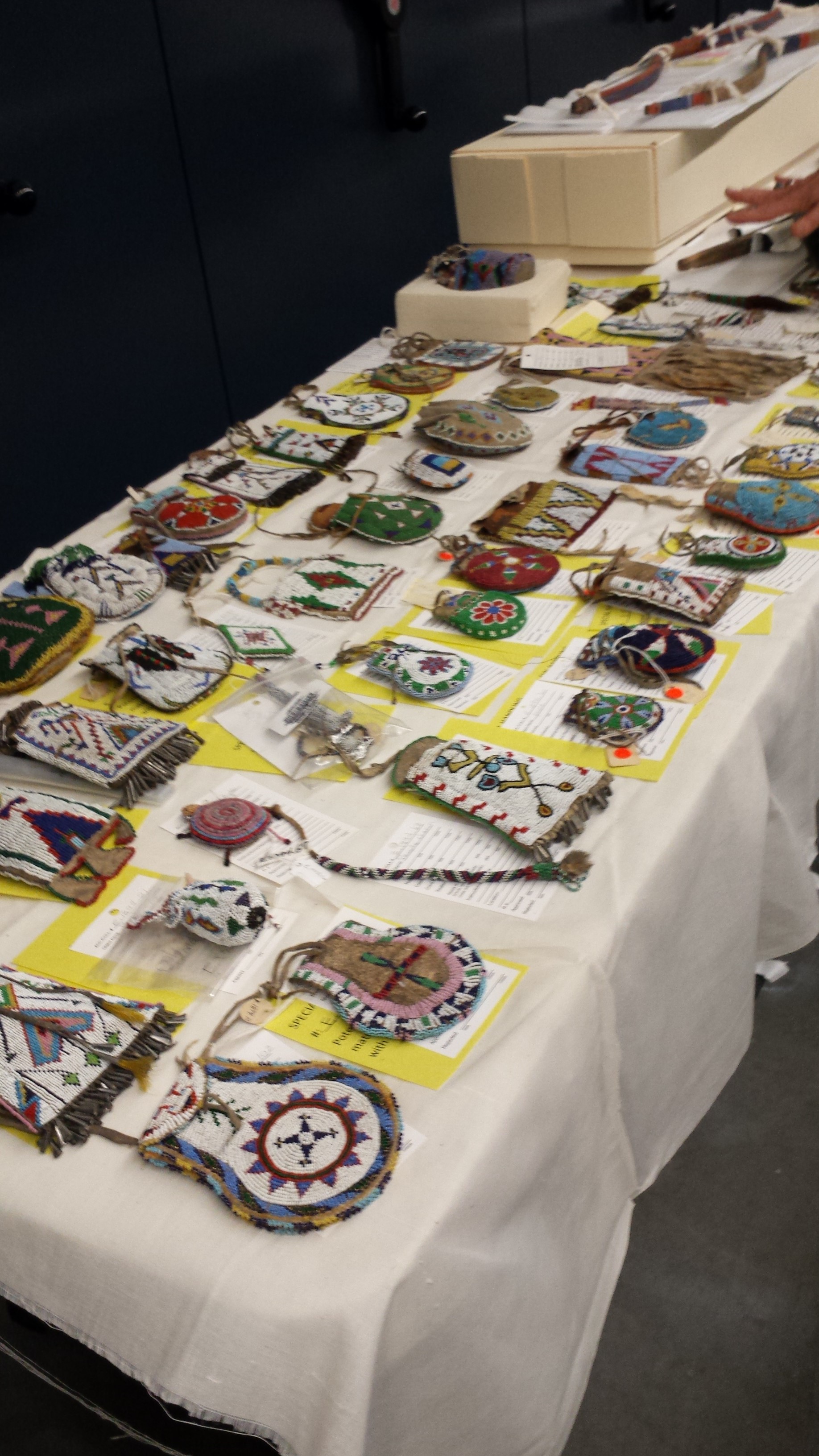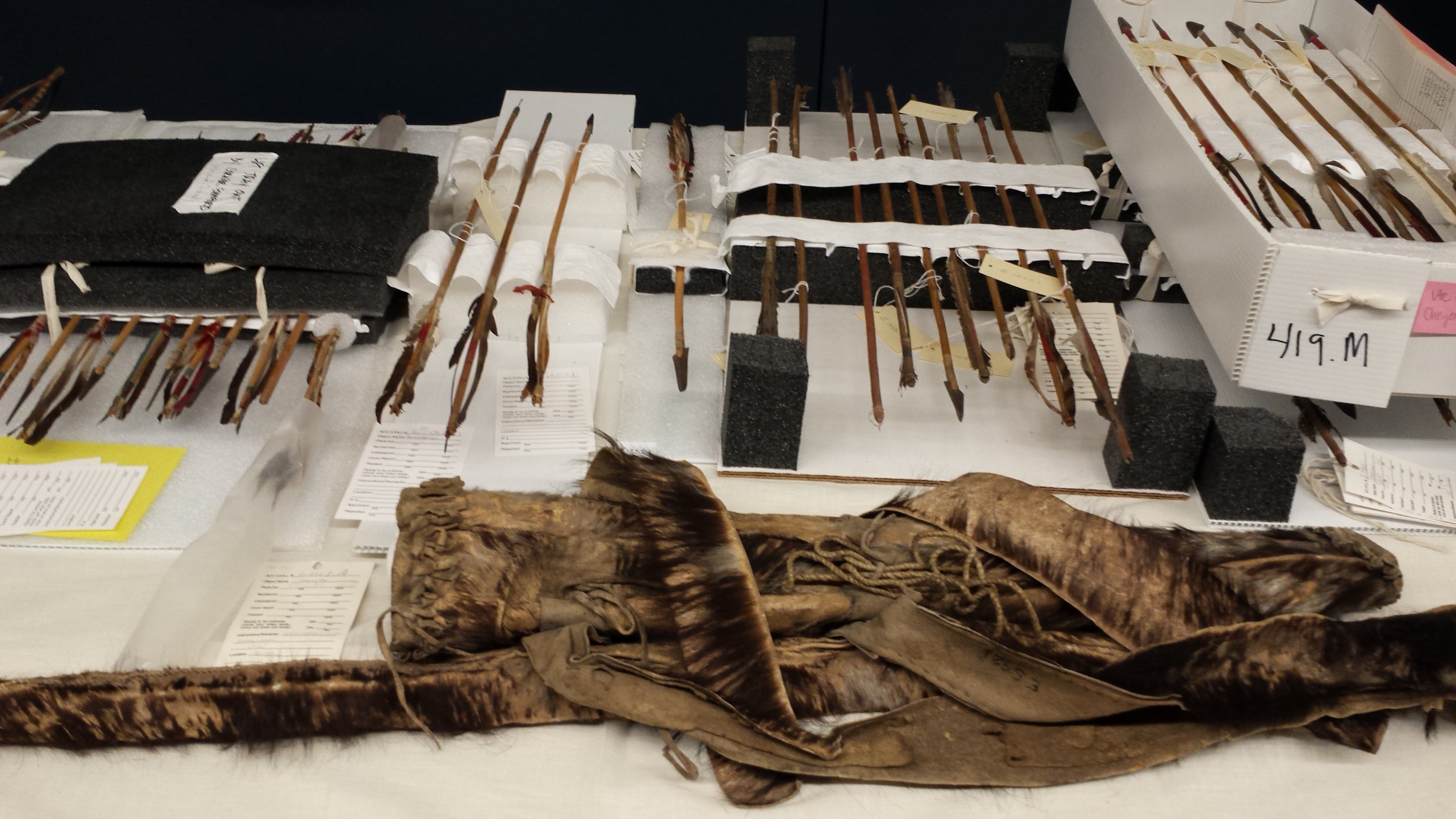Story
Working on New Exhibits at The Ute Indian Museum in Montrose
While the construction to expand the Ute Indian Museum in Montrose is moving along nicely, the exhibit team at History Colorado is busy planning the new exhibits to be installed there. One of the most exciting parts of exhibit development is selection of the artifacts to support the stories of the Ute people that we will tell.
History Colorado has an amazing collection of Ute artifacts and images. Many of the artifacts contain beadwork with intricate patterns. Beaded artifacts include pouches, dresses, shirts, belts, charms, cradleboards, and moccasins. The collection has artifacts used in everyday life in the past, such as bows and arrows and basketry. It also contains several beautiful hide paintings depicting the Bear Dance, Sun Dance, and creation stories. Many of these artifacts can be viewed on line.
We began to acquire Ute artifacts in the late 1800s, when the State Historical Society of Colorado was formed and we have continued to collect, with our last Ute collection arriving in 2012. Many of the artifacts come from people who knew or worked closely with Ute people. Sometimes a donor would gift one or two artifacts, but other times large collections would come to us.
How collections are made is almost as interesting as the artifacts themselves. One of our major collections once belonged to Thomas S. McKee. He was born in Kentucky, but grew up in Nashville. He trained as a photographer but worked as a railroad express messenger. McKee moved to Montrose in 1890 when he learned from a friend that the town had no photography studio. He photographed ranchers, miners, and Mesa Verde, but in the early 1900s he started to focus on documenting the daily life of Ute people. He also began collecting Ute artifacts and created a collection of well over 200 objects. He became friends with many Ute people, including Chief Ouray and Chipeta. When McKee died, the Smithsonian expressed interest in his collection, but his family felt it should stay in Colorado, so History Colorado was able to obtain it.
Another collection came from the grand-nephew of Joseph O. Smith, who was an employee of the Southern Ute Indian Agency in 1895 and later became an Indian agent. Other collections came to us from the descendants of persons who ran boarding houses or stores in the early 1900s in towns like Atchee, CO or Dragon, UT where the railroad passed. Ute people patronized their businesses and often became friends with the merchants who accepted artifacts as payment of purchases or services. Our last large Ute collection was donated by the wife of Southern Ute leader Edward Bent Box, Sr. Mr. Box was an important religious and political leader. The collection includes items he used in the Bear Dance and Sun Dance along with items he used in his work as a tribal council member.
The final artifacts that will be used in the exhibit will be selected in consultation with the three Ute tribes. We look forward to sharing these artifacts with you in the Ute Indian Museum in Montrose in 2017!



